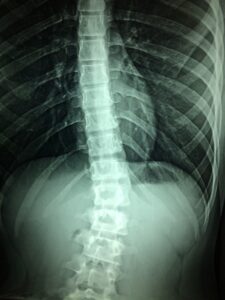Back Surgery Part 1 – Can Back or Neck Surgery Make You Worse Off Than Before?
In the Ray of Light Training classes, we often discuss the pros and cons of back and neck surgery. I have lots of experience, since I was told I needed back surgery twice (for different conditions 25 years apart), and I cancelled the surgery both times.
In my massage practice, I’ve worked with several clients who were able to avoid recommended back or neck surgery. And I’ve worked on many clients who came to me AFTER having had surgery. So, I’ve seen first-hand what they’ve had to deal with. I describe my experience and observations below.
Quick note – To see the ROLT Online CE Courses, click here:
https://roltraining.com/product-category/courses/
Pros and Cons of Back Surgery
The primary benefit of back or neck surgery: Sometimes there is no better option! And in many cases, surgery can reduce your pain dramatically – sometimes briefly, sometimes long-term.
The major consequences of back or neck surgery: Surgery CAN leave you worse off than you were before. There is always internal scar tissue that can cause more discomfort and pain over time. Often, there are more successful, less invasive options available.

My injuries
My experience with my own body and with hundreds of clients has informed my bias. I believe that surgery should always be a LAST resort!
To be clear, you don’t do surgery unless the condition is so dramatically bad that other options are just not going to help your quality of life. And you only get surgery after you’ve gotten a second expert opinion.
Twice in my life, I had a severely painful condition, and back surgery was prescribed by excellent, well-trained doctors. The symptoms and conditions were different and unrelated, and these episodes were separated by twenty-five years.
The first time, I was flat on my back in pain for three months, unable to walk, stand, or sit for more than 1 1/2 minutes at a time without excruciating pain. The orthopedic surgeon pointed to the MRI images and said that I had a “massive herniated disc and sciatica”.
The doctor diligently tried everything possible to avoid surgery – steroid injections, epidural injection, etc. But nothing helped. Finally, they said surgery was the only way out. However, I was able to cancel the surgery – just two days before the date! How cool is that!
In the second situation, I had severe neuropathy in my lower leg – completely different from sciatica. (I know all too well the signs and symptoms of sciatica.) This time, the MRIs did Not reveal a smoking gun – there was NO clear pathology!
Nevertheless, the neurosurgeon prescribed back surgery anyway. Huh? Why? This didn’t sit right with me. So I just ignored the advice of that doctor and looked for other solutions.

Say No to back surgery, if possible
In both situations, I was able to recover fully with no pain, full range of motion, and the ability to do any activities I wanted for years afterward. I’ll tell you what I did instead of surgery below.
The orthopedic surgeon in the first episode was honest with me, saying that 50% of all back surgeries result in the patient eventually having to come back again – in pain and requiring another procedure.
However, my brother-in-law, who is a neurosurgeon and does back surgeries every day, said that that was incorrect. I thought he was about to defend his profession. Instead, he said that the number of surgery patients that come back in pain is actually closer to 80% or more. What?! How many doctors mention these statistics?
For some people, back surgery is like a miracle! They get their life back, their pain disappears long-term, and they’re able to move and do whatever they want without worrying about the pain creeping back into their life.
However, for many people, the post-surgery experience is tragically different. The pain comes back sooner or later, sometimes worse than before, sometimes resulting in more surgeries.
Why does back surgery often “fail”?
In some cases, these patients experience short-term relief before the pain returns. Other times, the pain and lack of mobility perseveres after surgery and just gets worse over time, even after multiple operations.
A lot depends on the patient’s condition when they come in. After years of terrible posture, harsh work conditions, stubbornly putting off treatment, and plain old abuse, some spines are in a horrible state by the time they get to the doctor. For those people, surgery may be the best option.

For most people, though, the recurrence of pain is due to the “silver bullet” myth. They think the back or neck surgery is going to fix all their problems, and they don’t have to DO anything.
They may go to physical therapy after the procedure but stop doing the exercises as soon as the sessions are over, thinking that everything is going to be hunky dory.
Then they go back to the same work conditions, the same activities, the same floppy posture in the same too-soft sofa and chairs, and expect things to be better than before.
Btw, has anyone ever found a sofa or chair made for human beings? One that doesn’t trigger dysfunctional postural patterns in the spine over time? If you have, let me know.
So, it’s often not the doctor’s fault. Surgery is what they’re trained to do, and most of them do that to the best standards of modern medicine. Sometimes however, they don’t make clear the responsibility of the patient to maintain or further their recovery.
I definitely think they should be honest about the statistics, the potential for recovery, the limitations to surgery, and the things patients can do to maintain a healthy back.
Who’s Responsible for Healing You?
But in the end, it’s the patient that has to do the PT exercises, modify their posture and/or activities, and take responsibility for their health. What a concept! Not a popular talking point in our sedentary culture.
As for myself, I was able to avoid back surgery by getting consistent massage – deep myofascial release techniques similar to what I teach in the Direct-Indirect Technique CE classes – and gentle Cranial-Sacral Therapy techniques, which I also teach.

Also, I continued doing physical therapy exercises, strengthening, and Muscle Balancing techniques for years. I still do them! And I combine these with daily yoga stretches, inversion, long walks, tai chih, “dead hang” from a pull-up bar, and more.
In addition, I did some emotional release work to let go of some of the emotional baggage I had been carrying around for years – anger, sadness, and fear. In other words – Stress! The connection between stress and painful pathologies is becoming more and more evident. In the end, I took responsibility for my body and mind health, which is something that anybody can do if they set their mind to it.
In Part 2 of this blog post, I will show you exactly how current back and neck surgery procedures can make the spine dramatically more unstable, leading to more pain and pathology down the road.
I will draw upon the experience of a medical doctor that I have a lot of respect for, one who is board certified in Physical Medicine and Rehabilitation.
Stay well, John
John Joseph Ray
Ray of Light Training
John is a Board Approved Continuing Education Provider through the NCBTMB
Member of the Fascia Research Society
